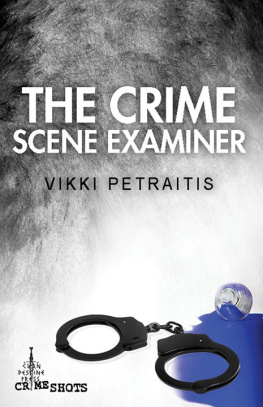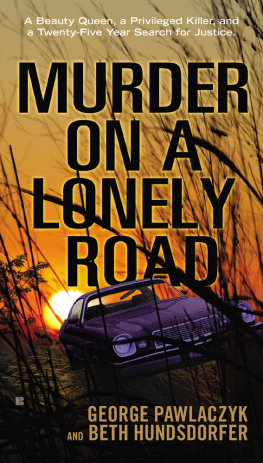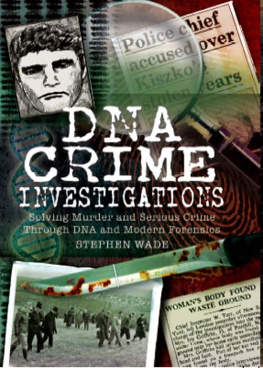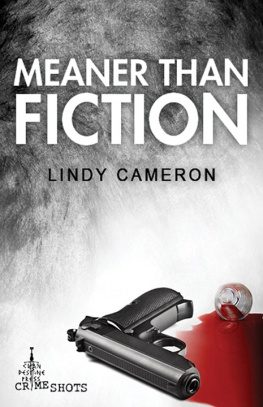THE MYSTERIOUS PHILLIP ISLAND MURDER
by
Vikki Petraitis

BLURB
When 23-year-old Beth Barnard was discovered brutally murdered in a farmhouse inPhillip Island in 1986, her murder sparked an investigation that has haunted locals ever since. Herthroat was cut, and she had a huge letter A carved into her chest. On the same night that Beth died,another local woman, Vivienne Cameron, vanished off the face of the earth. A police investigationrevealed that Beth had been having an affair with Vivienne's husband. What really happened thatnight remains one of Victoria's most baffling murder mysteries.
THE MYSTERIOUS PHILLIP ISLAND MURDER
When a young woman was murdered on Phillip Island on the night of Monday 22September 1986, the crime failed to make significant column inches in any but the local Islandnewspapers. This was odd, because it had all the staples of sensational headlines - a gruesomemurder, adultery, money, and a missing wife. Soon, the case was largely forgotten by all exceptthose who knew the victim and the woman accused of her murder.
Even though it fizzled to an unsatisfactory conclusion, the case never quite died down becauseit contained a mystery that made average people turn into armchair detectives to try and solve it.To date, no one has.
The beginning point was an affair between 36-year-old farmer Fergus Cameron and his 23-year-oldfarm hand, Elizabeth Barnard, or Beth to her friends. The trouble was, Fergus was married - tosomeone else.
Indeed his wife Vivienne had gotten wind of the affair and told anyone who cared to listen -mostly locals on the Island - that she was thinking of leaving Fergus, taking their two young boysand moving back to Melbourne. You see, this wasn't the first time her husband had cheated; andVivienne was over it.
And then came the night of crisis that was to change everything forever.
There are a number of accounts of what happened that Monday night - some werelater believed by detectives, some were not. But suffice to say, by the Tuesday morning, when awoman's mutilated body was discovered in a farmhouse on the Island, events were set in motion thatwould shatter several local families forever, and send ripples through the peaceful community.
Sergeant Cliff Ashe had just returned from leave and was working a morning shiftat the Cowes police station on Tuesday 23 September. Two well-known locals, brothers-in-law IanCairns and Donald Cameron opened the creaking wire door and came over to the counter. Don Cameronhad been on the shire council for some years, and his family was respected in the small community.Ashe was busy with paperwork, and listened as the two men spoke of some family difficulties.
'There's been a domestic argument,' said Don Cameron, before beginning a long and ramblingexplanation. Ashe reckoned Don talked for about 10 minutes about family fights and familyconferences before the police officer interrupted him.
'Donald, exactly what are you trying to tell me?'
'Um, it's Beth,' Don said, leaning over the counter and looking from side to side. 'I thinkshe's not well.' This was a strange way of putting it, given what he next told Ashe.
Beth's lifeless body was lying on the floor of her bedroom in her family's house in McFees Road,Ryhll. Even though she was mostly covered by a doona, Don had seen the vacant stare of her blueeyes, and enough blood to be sure. He finally said as much to the police officer. 'We were just ather place and she was lying on the floor with blood everywhere.'
Galvanised into action, Sergeant Ashe called detectives at the Wonthaggi Criminal InvestigationBranch and told them to meet him at the McFees Road house. Ashe and one of his juniors from thestation, Senior Constable Peter McHenry, drove behind Don Cameron and Ian Cairns to the house down alonely country road where homes were secluded and set apart from each other.
Even in the pre-DNA days of 1986 when TV featured shows like Dynasty and Dallasrather than several variations of CSI, every cop knew that a crime scene needed to bepreserved. Ashe and McHenry were responsible for securing the scene and limiting entry. Even so,given the vague complaints from Cairns and Cameron, Ashe thought it best to enter the house to makesure that the young woman inside was actually dead.
The sergeant walked carefully up the side driveway until he got to the back of the house -retracing the route that Don and Ian said they took earlier. He saw that both the screen door andthe back door were slightly ajar. He opened them carefully and went inside; the house was dark andsilent. It took only a couple of steps along the hallway to get to the first bedroom door.
Beth Barnard lay on the floor of the bedroom. Even though a quilt covered her from the nosedown, Ashe could see her blue eyes were indeed vacant and unseeing. A large pool of congealed bloodon the carpet around her head made it obvious to the police officer that Beth was dead even thoughhe could see no injuries.
Ashe carefully lifted a corner of the quilt and pulled it up and saw something that he wouldremember forever. The young woman's throat had been sliced to the bone, nearly beheading her. Inwhat was clearly a savage attack, a knife blow to her upper lip had smashed out one of her top frontteeth. Ashe gently placed the quilt in its original position, and backed out of the room,shocked.
While Ashe was in the house, young Senior Constable Peter McHenry stood outside with Don andIan. Not having seen the carnage inside, nor heard anything but a second-hand account on theten-minute ride from the police station, McHenry listened as Don and Ian laughed and chatted as theywaited for Ashe to re-emerge. He didn't think much of it at the time.
Ashe used his police car radio to call in detectives from the Homicide Squad. Minutes later,three CIB detectives arrived from Wonthaggi - Sergeant Ron Cooper, Senior Constable Alan (Jack)McFayden and Senior Detective Alan Lowe. The house had officially become a crime scene.
Detective Jack McFayden was a no-nonsense country copper and when he wasn't involved in thebusiness of fighting crime, he loved nothing better than to hang a Gone Fishing sign on hisdoor and disappear to his favourite fishing hole. He'd seen a lot of bodies in his long career, andit never got any easier.
McFayden entered the house. He was always conscious of the intrusion of a homicideinvestigation. He knew that the dead woman's secrets would be poured over by the detectives, and herdignity and privacy would fall victim to the urgency of catching whoever killed her.
While the body on the floor gave a chilling aspect to the bedroom, the rest of it was what onemight expect from a young woman. Two single beds flanked opposite walls, piles of discarded clotheslay around, and stuffed animals fought for space on top of the chest-of-drawers with photos andbottles of perfume. Next to the clutter were some cold and flu tablets and a bottle of coughmedicine. There was also a glass of water and some pain-killers. One of the beds was unmade, whilethe other was ruffled and blood-stained.
McFayden took in the bedroom and its contents and made a cursory search of the rest of the house- just in case there were further victims. But everything else seemed in order and there was no signthat the struggle had continued anywhere else; although there was some blood around the bathroomtaps. Perhaps the killer had washed his hands afterwards. Or her hands.
Back outside, into the bright September day, McFayden noticed a couple of drops of blood on theconcrete path outside the back door. Did that mean that the fleeing killer was injured as well? Atthis early stage, everything was mere conjecture.
Next page













